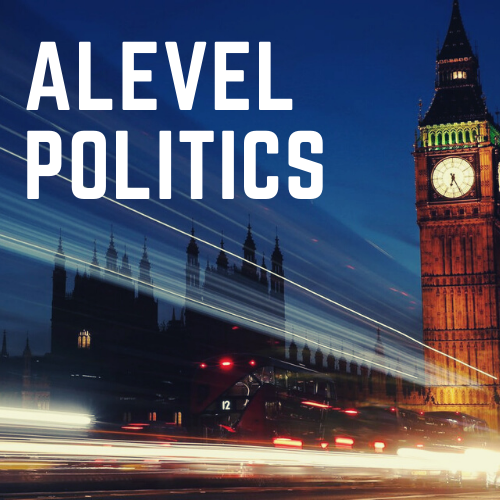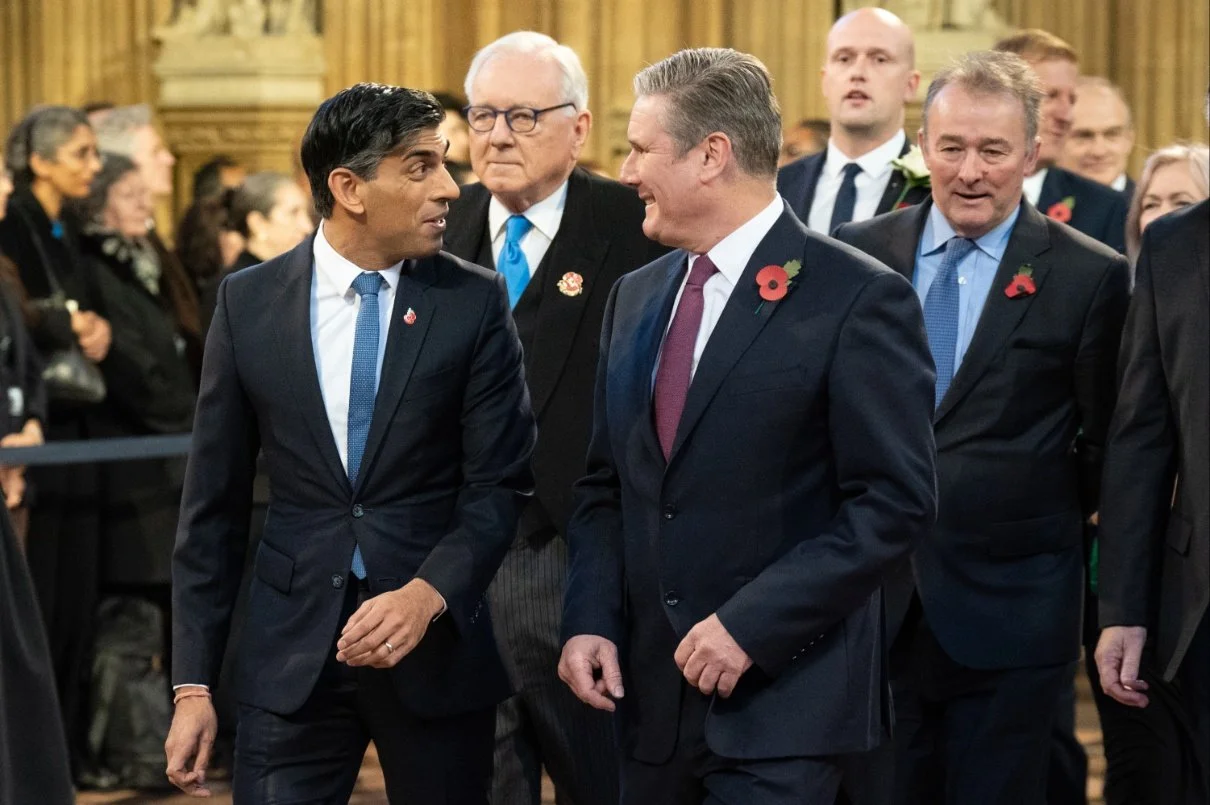Evaluate the view that the two major parties are more similar than dissimilar regarding policies and ideas
Despite their juxtaposing beginnings, the two major parties nowadays look very similar in fundamental ideas and policies. This essay will consider economic, welfare, and foreign policies to conclude that the major parties clearly agree more than they disagree on policies and ideas.
Some may argue that there are some disagreements between labour and conservative regarding the economy. On one hand, labour has called for more of a windfall tax on energy companies, whilst the conservatives announced a reduction of NI at the same time. The labour party resisted these pledges and criticised the party. Critics argue that in an age of Starmer attempting to separate himself from old labour values, the fact he rejected this ‘new labour’ policy shows their dissimilarity. Furthermore, during covid the labour party urged for more money for free school meals and COVID recovery, whilst the Tories stuck to their Thatcherite roots and wished to prevent a dependency culture from forming. Even Sunak has said he would prefer not having to raise taxes, claiming ‘I am a Thatcherite, and I will govern as a Thatcherite.’ Thus, proving that the parties are innately left-wing and right-wing, on either side of the pole. Arguments for their similarities focus too much on election time. The two parties are cautious ahead of polling, but often swing to their more radical extremes after the election. For example, even though Starmer pledged to reduce government spending to a minimum during his campaign, he later announced plans to increase income tax for those earning £80,000 in order to rise public spending.
However, this argument is weak as clearly the major parties hold a united view on big areas of the economy. There is unanimous agreement that government intervention is necessary during a crisis, something that in the past contrasted the tories’ laissez-faire values. Sunak introduced the furlough scheme during covid with vast support from Keir Starmer. as well as prioritising national finances in the context of the cost-of-living crisis/the huge debts in recent decades. Both conservative and labour also accept that some privatised services, such as the railways, have worked well. For instance, the conservatives have semi-nationalised the railways, and the labour party have announced they would bring them into public control- but want to avoid a return to wholesale nationalisation. The recent spur of unity between the two major parties is due to Starmer’s goal to move labour away from the high taxation, high spending policies of the Corbyn era. Instead, he has supported a more cautious, centrist approach whilst building links with the business community. For example, he has rejected Corbyn’s ‘six big nationalisations’ and supported the use of Private Finance Initiatives in the NHS. Overall, the main factor regarding labour and conservatives newfound similarity is the motivation by the ideas of social democracy and one-nation conservatism on the economy- moving away from their left and right extremes.
Overall, whilst the Starmer sometimes sounds slightly old labour in tone, juxtaposing the conservatives, it is clear that the economic policies of the two main parties are more similar than they are dissimilar.
Critics argue that the labour and conservative party disagree on the welfare state. During austerity, under Cameron, the conservatives put less and less money into public services over time, causing labour to accuse them of underfunding. For example, Starmer was quick to accuse Sunak of being the cause of dangerous ambulance and A&E waiting times. This shows that there are clear disagreements over conservative competency. Furthermore, following the COVID pandemic, labour’s shadow chancellor Rachel Reeves has attempted to counteract the Tories by promising to inject more finance into healthcare in order to improve these response times. Labour has continuously accused the government of mismanagement of funds over the pandemic and says they will merge social care into the NHS- instead of a separate service as is today. This contrasts the conservative wish to keep dependency on public services low. Overall therefore, although the differences are not substantive, the labour party is promising to inject more competence into how these services are run.
In the past, the disagreements between the two major parties on welfare were huge. Labour was seen to be pro-welfare, whereas the Tories outright rejected it. However, since Blair’s tenure the sides have moved closer together. He transformed new labour into a party that offers a ‘hand up, not a handout’. Similarly, since the pandemic, the conservative party has dedicated more money to healthcare and have acted on the one nation principle of ‘noblesse oblige’ in which the rich have a responsibility over the poor. For example, the party wrote off the debt that hospitals had to help put the NHS on a sounder economic footing to fight COVID. As well as Labour supporting the decision to increase tax to help fund the NHS. This shows that after covid, the lines between left and right wing have been blurred. Following this, Keir Starmer’s shadow health minister, Wes Streeting, has called for more use of private healthcare to escape the debt and backlog shrouding the NHS. This is something Sunak approves of, as he has also pledged for waiting times to be reduced, a one nation welfare value. Many argue that Streeting’s reason for these ideas is to appear more centre, in order to entice more voters. One of the key failures of the labour party, in the eyes of the tory electorate, is their irresponsible nature of finances within welfare.
Therefore, despite slight altercations regarding the pandemic, this harmony between policy ideas and approaches to tackling the issue of the NHS shows that the two major parties agree more than they disagree.
Moreover, it is claimed that the parties disagree on foreign/immigration policies. Although now both labour and conservative accept Brexit, the conservative party continues to be much more supportive of a hard brexit than Starmer and the wider labour party, who were forced to go through with it due to their failure in the 2019 election. Because of this, they lack the strong ideological support for the cause that the Tories maintain. Furthermore, in regard to both Ukraine and transatlantic alliances, there’s a vast disagreement in tone, not approach. For example, David Lammy, shadow foreign secretary, criticised the conservative’s inconsistency on China, but both parties outline similar approaches to the state. Both encourage trade deals but condemn its views on HR. On immigration, the conservative party takes a much stronger stance. They pledged the Rwanda bill, with Sunak stating he will do anything to ‘stop the small boats’ despite some tactics contravening the HRA. By contrast, whilst labour has certainly not taken a pro-immigration stance, it has criticised the Rwanda bill, instead promising to fix the UK’s failing asylum system and process claims quicker.
However, this argument is clearly flawed as on recent global events, both parties’ opinions have been aligned. On Israel, the labour party has remained very close to the Tories. They have mirrored the government in backing Israel, stating they have the right to self-defence. For example, David Lammy reiterated David Cameron and stated labour supported Israel in retaliation, but its response must be proportionate within the bounds of international law. A strong reason for this stance is because of Corbyn’s past accusations of antisemitism; Starmer wishes to distance himself from the former party leader as much as possible. This is another example of Starmer making every effort to push his party to the centre. Furthermore, both conservative and labour have strong policies against Russia’s war in Ukraine, with the government giving Ukraine significant military support and labour pledging to do the same once in power. The labour party doesn’t want to disagree with the government out of fear they’ll appear unpatriotic, the way Starmer will gain power is though winning back those red wall seats, many of whom are working class, patriotic members of the electorate. Starmer also knows that following Sunak’s lead with foreign policy makes him seem appealing to the US.
And thus, despite initial differing views on Brexit, the extent to their agreement on foreign policy, whereby Starmer simply echoes the Conservates, proves the two main parties are more similar than they are dissimilar.
In conclusion, there are some differences between the policies of the labour and conservative party in tone, particularly regarding immigration and some aspects of welfare. However, since Starmer becoming party leader, he has made continuous efforts to distance himself from the ‘old labour’ faction, eliminating left wingers from his party. Instead, in practice, the two main parties often echo each other. Their dissimilarities are outweighed by the agreements on economic, welfare and foreign policies. Starmer acknowledges that to gain power, he must beat Sunak at his own game, not create a new one.
Nora

